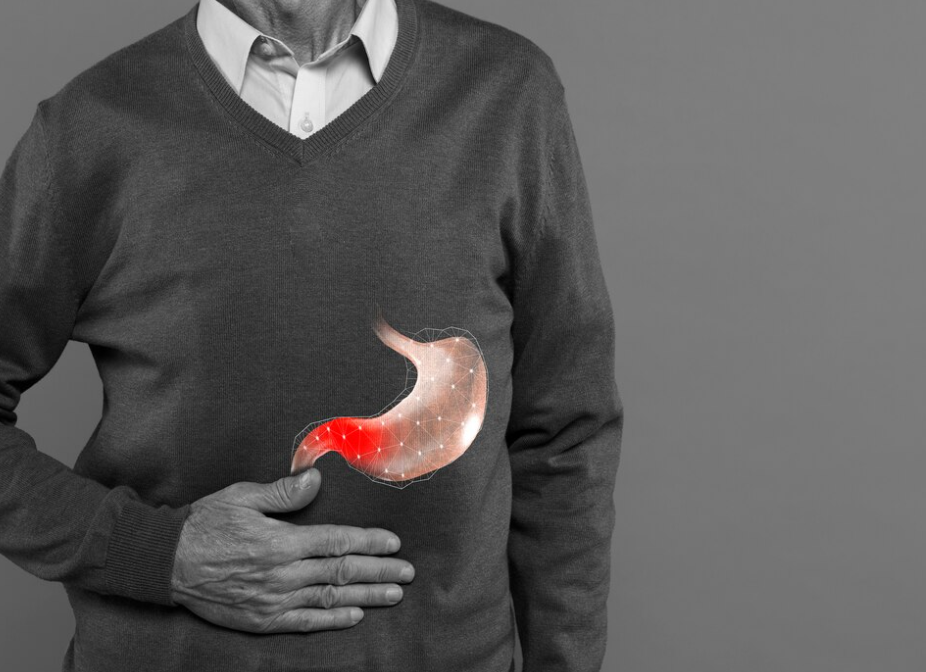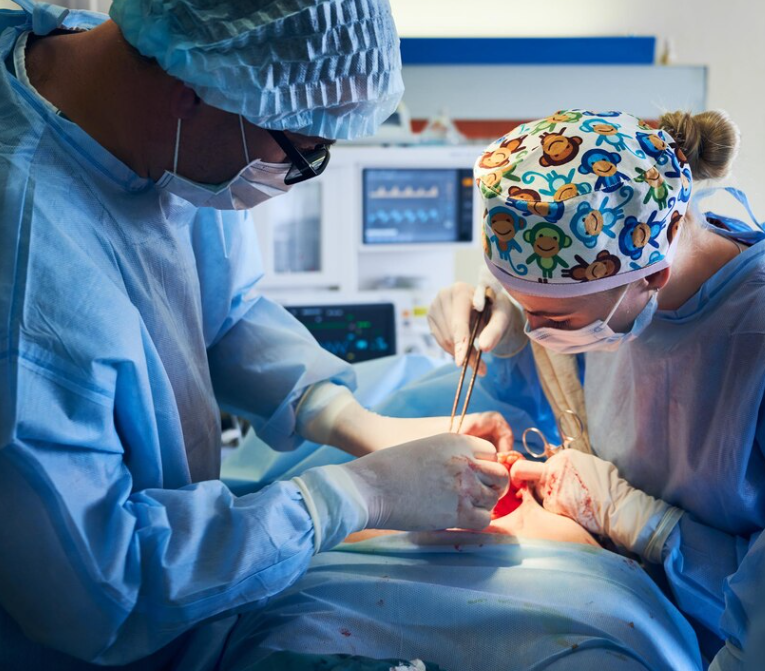Liver Donors
Liver Donors
The liver is a vital part of the digestive system. Choosing to donate your liver could save someone’s life.
Liver donation is usually something that happens after you die, but if you are fit and well it may be possible to donate part of your liver to someone else while you are alive.
- The donor liver
Deceased liver donors
Living liver donors
- How you are matched to a donor


The donor liver
A donated liver may be a whole liver, a reduced liver or a split liver.
- A whole liveris exactly as you’d imagine, the entire liver.
- A reduced liveris when only a part of the liver is used. This is more common in liver transplants in children.
- A split liveris when either a right or left lobe is used. Usually, the larger right lobe transplants are used for adult recipients, and the smaller left lobe is used for children, or an adult with a small body size.
Both a reduced and split liver will grow over time to a full-sized liver.
Deceased liver donors
Most donor livers in the UK come from people who have died. These people will all have died from a terrible brain injury. For example from a stroke or physical damage from an accident. There are two types of donor depending on how it was determined that they had died.
Donation after brain death (DBD) means the person has been declared dead through brain testing. When this happens, the person will still be on a machine to help them breath and their heart will still be beating. So their liver is still getting blood and oxygen until the moment it is removed.
Donation after circulatory death (DCD) means the person could not be tested for brain death. Instead they were declared dead after their heart stopped beating. This can potentially have more risk. Because the supply of blood, oxygen and essential nutrients to the liver is interrupted when the donor’s heart stops beating. So the cells in the liver can start to deteriorate. However, livers can be preserved in what’s called a perfusion machine and this technology is still developing. You might like to ask your transplant team what they use in your centre.
There are other risks to consider. Some livers are likely to work for longer than others, for example because of health problems the donor had. It is also possible for diseases to be passed to you through a donor liver. All donated livers carry some risk, but generally this is much lower than the risks of your liver disease.
Your transplant team will talk you through your choices and explain what these could mean for you. This is your personal choice and they will support you whatever you decide to do.


Living liver donors
A healthy liver is the only organ in the body that can (under the right circumstances) re-grow a lost part, which is why a living donor can donate part of their liver.
The person will need to have a number of tests before they can be considered to make sure they’re healthy enough to donate and their liver is working properly. These include:
- blood tests
- scans and X-rays
- urine tests
- heart tests
- liver tests
Living donors will also have a psychological assessment because donating part of your liver is a big decision, which can be an emotional process. The assessors must ensure there isn’t a risk of harm to their mental health.
The living donor will also be assessed by an independent assessor on behalf of the Human Tissue Authority to discuss the reasons for donating and to make sure they understand the process. The Human Tissue Authority will need to approve the donation in order for the operation to happen.
A Living Donor Coordinator will guide them through the entire process and be on hand to answer any questions.
General Questions
A living donor liver transplantation is a surgery that removes a diseased or malfunctioning liver and replaces it with a portion of a healthy liver from a living donor. Due to the liver’s unique ability to regenerate, the partial livers of both the donor and recipient soon grow into complete organs.
Because this type of surgery uses a portion of a liver from a living donor, rather than a liver from a deceased donor, it offers several significant benefits:
- Shorter Waits: Typically, living donors are a family member or loved one of the recipient. This means there is no need to remain on a waiting list.
- Faster Recovery: Living donor recipients experience shorter hospital stays and are less likely to require blood transfusions or dialysis after their surgery.
- Improved Outcomes: Recipients of living donor livers have an average 5 percent better long-term survival rate than recipients of deceased donor livers. See the data below.
Because of their size and relative high rates of liver disease, children under the age of two have typically faced a shortage of donor organs. To address this, living donor liver transplantation was developed.
Dr. Jean C. Emond, Columbia Surgery’s Chief of Transplantation, helped pioneer this procedure in the 1980s and was on the first team to perform a successful living donor liver transplantation in the U.S. Since then, he has helped expand its application to adults. As a result, the Center for Liver Disease and Transplantation is now one of the only programs in the nation that offers living donor liver transplantations for both children and adult patients.
The Center has helped further innovate this procedure by introducing laparoscopy and increasing the use of left lobe grafts, which are smaller and pose less of a risk to the donor.
Due to the Center’s innovative work, nearly half of our living donors can donate the left lobe of their liver, while those donating to children require only a 3-inch laparoscopic incision.
As with any major surgery, living donor liver transplantations come with risks, including possible complications. For donors, these include:
- Bile duct leakage
- Bleeding
- Blood clots
- Hernia
- Infection
- Nausea
For recipients, the risks are similar to those of a deceased donor liver transplantation. These include:
- Bile duct leakage or shrinkage
- Bleeding
- Blood clots
- Failure of donated liver
- Infection
- Mental confusion or seizures
- Rejection of donated liver
However, because the donated liver comes from a living donor, serious complications occur at a lower rate. In fact, research has shown that the majority of complications that occur during living donor liver transplantations are due to the relative technical complexity of the procedure and are offset when performed by experienced surgeons.
In general, a living donor liver transplantation takes about four to six hours to remove the donor liver, then another six to 12 hours to implant it into the recipient.
The surgeon will begin by making a long incision across the donor’s abdomen to gain access to the liver. (If the recipient is a child, then a smaller laparoscopic incision will be made.) Next, they will remove a portion of the liver that they have previously decided is adequate for the recipient. This portion may make up anywhere from 25 to 65 percent of the liver. After controlling bleeding, they will then close the incision and take the donor to recovery.
In the second half of the surgery, the surgeons will implant the healthy liver portion into the donor recipient. To begin, they will make a long incision across the recipient’s abdomen, much as they did for the donor. Next, they will sever the existing liver’s attachments and remove it. Finally, the donor liver portion will be implanted. This will involve attaching their body’s veins, arteries, and bile ducts to the donor liver. This will reestablish key connections and ensure the donor liver can function properly. When this is done, the surgeon will close the incision.
In both the donor and the recipient, the liver will immediately begin regenerating itself once it has been implanted. This process generally takes between six and eight weeks to complete.


Donor Questions
To become a living liver donor, you must meet the following requirements:
- Be a willing adult between the ages of 18 and 59, inclusive
- Be in good general mental and physical health
- Have no history of drug use, liver disease, HIV, or cancer
- Have a blood type compatible with the recipient
- Have a BMI less than or equal to 35
- Have an altruistic motive to donate
Living donors are on the front lines of helping to alleviate the shortage of donor organs and save the lives of those in need.
If you are interested in becoming a living donor, you can register here.
Yes. Non-directed living donation, or altruistic/anonymous donation, is the act of donating an organ to someone you don’t know. The recipient of the donation is selected based on their medical compatibility, including blood type and size. In addition to helping one specific transplant patient with earlier access to a lifesaving procedure, you are also aiding all other transplant patients by taking that patient out of the pool of individuals waiting for organ offers.
While non-directed living donors do not benefit in the same way as donating to someone you love and care about, it can be a profoundly positive event. Many donors leave this experience with a sense of fulfillment for doing the ultimate good deed of saving someone’s life. Donors and recipients have the choice to meet each other or not after an appropriate period of time for recovery.
Donation is not a decision to be taken lightly. For that reason, we give non-directed or altruistic donors early access to our independent donor advocate, a licensed social worker, to help determine if this is the right choice. They will be able to chat with you about your life and current situation to identify any possible barriers or concerns that would need to be addressed before someone starts the donation process. We also give our donors the opportunity to speak with someone who has been through this process before. Speaking to someone who has already donated gives a unique and first hand resource to donor candidates.
We closely evaluate all candidates for living liver donation. This allows us to determine whether you can safely donate now and whether you will face any long-term health risks. It also allows us to communicate detailed information regarding the surgery and your recovery period.
- Blood Tests: Determines whether your blood is compatible with the recipient’s blood, as well as whether your liver, kidney, and thyroids are functioning properly. Also screens for transmittable viruses, such as hepatitis and HIV.
- Physical Exam: If your blood types are compatible, then a physician will examine you to determine your general level of health.
- Magnetic Resonance Imaging (MRI): Creates a detailed picture of your internal organs so that surgeons have an anatomical “road map” during surgery.
- Diagnostic Tests: These will include a CAT scan of your abdomen and a chest x-ray.
- Screening Tests: If required, these may include an echocardiogram (EKG), pulmonary function test, and an exercise stress test.
- Additional Consultations: You will also meet with a psychiatrist to assess your mental health and a social worker, who will discuss the donation process with you and your family.
It typically takes two to four weeks to complete the donor evaluation process. However, in rare emergency situations, it can be completed in as little as 48 hours.
For more information on the evaluation process, call (877) LIVER MD/ (877) 548-3763.
If you’d like to learn more about becoming a Living Liver Donor, give us a call at (212) 305-9381 or get in touch using our donor inquiry form.
After their surgery, the donor will typically remain in the hospital for four to seven days.
Their first night, donors will stay in the Surgical Intensive Care Unit, where specialized nursing staff can closely monitor them. If there are no complications, they will usually be transferred to the general surgical floor, where nurses are specifically experienced in caring for liver donors. Most donors will be able to return home when they show stable vital signs, are able to eat and drink, and have a clear incision site, among other criteria.
On average, most donors are fully recovered after three to six weeks. However, every donor’s recovery time is different.
During this period, donors will return to the hospital for routine visits so that their recovery can be monitored. By carefully assessing their health, hospital staff will help each donor determine when they can resume normal activities and return to work. This decision is informed by data from lab tests, observations of any signs or symptoms, and the judgments of both patient and staff.
The recipient’s health insurance will cover the donor’s medical expenses. This includes:
- Donor evaluation (if performed by the Center for Liver Disease and Transplantation)
- Surgery
- Hospitalization
If additional financial assistance is needed, the Health Resources and Services Administration (HRSA) created the National Living Donor Assistance Center. This program will cover all travel, lodging, meals, and incidental expenses incurred by the donor as part of:
- Donor evaluation
- Hospitalization
- Medical or surgical follow up (within 90 days of the procedure)
The program will pay for a total of up to five trips, three for the donor and two for accompanying persons. The accompanying persons need not be the same each trip.
Visit the National Living Donor Assistance Center’s website to learn more.
Recipient Questions
Because living donor liver transplantation surgery involves the transplantation of only a portion of a liver, rather than an entire liver, patients with severe liver disease are usually not eligible. Other possible disqualifications include:
- Active infections
- Alcohol or substance abuse
- Cancer outside of the liver
- Other diseases or conditions
Before undergoing any surgery, your transplant team will conduct a thorough evaluation in order to determine your eligibility.
There is no waiting list of live donors. Instead, the majority of recipients rely on a family member or friend for their donor liver. Only in very rare cases will they have no prior relationship with their donor.
Once a living donor is available and all evaluations are complete, the transplantation surgery will take place as soon as possible.
After their surgery, the recipient will remain in the hospital for about 7 days.
Their first night, recipients will stay in the Surgical Intensive Care Unit, where specialized nursing staff can closely monitor them. If there are no complications, they will usually be transferred to the general surgical floor, where nurses are specifically experienced in caring for liver recipients. After several days of recovery, most recipients will be able to return home.
On average, most recipients are fully recovered after 3 to 6 months. However, this will depend on the severity of their condition, their age, and their general health.
During this period, recipients will return to the hospital for routine visits so that their recovery can be monitored. By careful assessing their health, hospital staff will help each recipient determine when they can resume normal activities and return to work.
According to data compiled by the Organ Procurement and Transplantation Network (OPTN), the national survival rate for living donor transplants performed between 2008 and 2015 was:
- 92 percent one year after surgery
- 88 percent three years after surgery
- 84 percent five years after surgery
As a comparison, survival rates for deceased donor transplants in the same period were:
- 91 percent one year after surgery
- 83 percent three years after surgery
- 75 percent five years after surgery

Why Choose Us
Complete Liver & Cancer Care Solutions For All
ExperienceTeam
+15 Yrs Experience
Standards Treatments
Best Departments
Get Appointment

